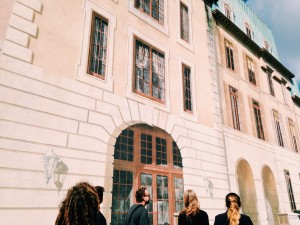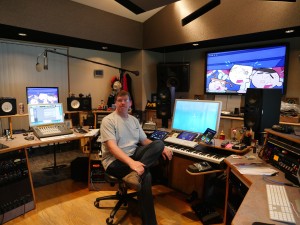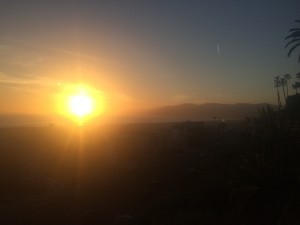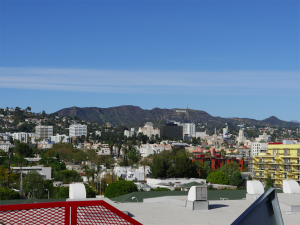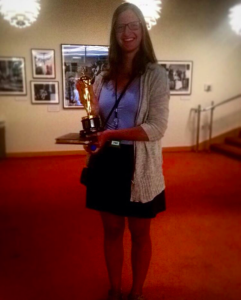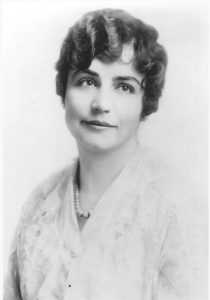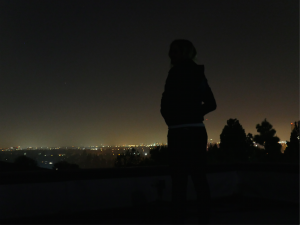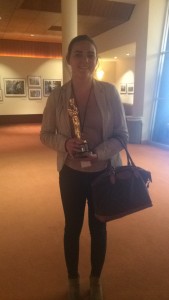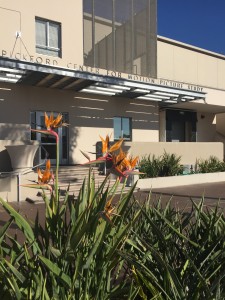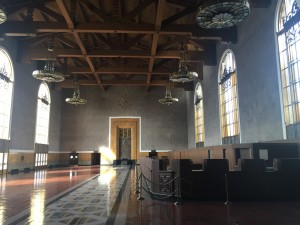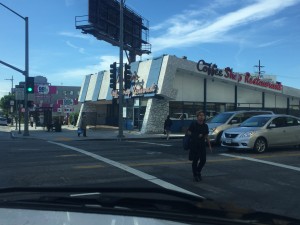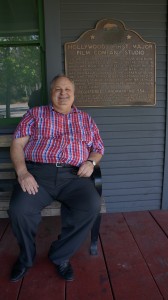Late last night, four of my classmates and I returned to LA after spending the weekend at Lawrence University in Appleton, Wisconsin for the first ACM Film Festival. The weekend was full of student films and cold weather. While the trip was enjoyable, it was busy and it was cold. I am from Colorado, so the cold doesn’t bother me, but for some reason, Wisconsin didn’t feel right. Upon returning late last night we were glad to return to the warmth of LA. Getting back into the van we are often stuck in for long rides in traffic, it felt comforting and normal. The same was true when I entered the apartment we are staying at for the block. It is strange to me that I found myself returning to a place that I have always thought I wanted to avoid – Los Angeles. Before this class I never thought I could spend this much time in LA and be happy about it. Returning last night made me realize that for the moment, LA is my “home” base, full of exciting adventures and great company.
Tonight a few of us went downtown for dinner and attempted to watch a movie at the RedCat theater by the Disney Concert Hall. We wandered around the downtown area for a bit searching for food. While walking we came across this area that was more pristine and had carefully designed spaces. The walk was lovely and we passed the bench from (500) Days of Summer that is currently inaccessible due to the fence around the park it is in. I always feel that it is important to walk around a new place in order to get to know it. Even though LA is large and we did not walk around that much, I feel like I have a better sense of the downtown area.
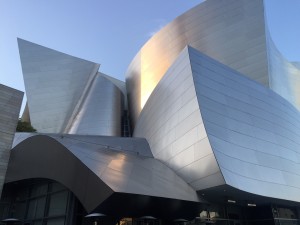
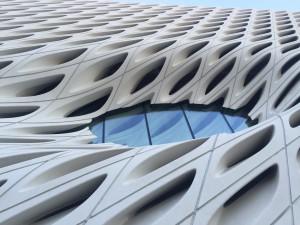
Also, through wandering we discovered some interesting spaces. After discovering the Central Market was closed (and that many other restaurants happened to be closed on Mondays) we settled down in a restaurant with great a view. We sat outside and looking up would see tall, looming buildings. There was one in particular that looked like a flat panel standing straight up, ready to fall over with too much wind.
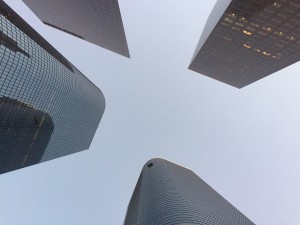
Unfortunately, the movie was sold out so we did not get the chance to see it. Regardless, the evening was enjoyable. I appreciate how throughout this class I have been slowly discovering treasures within the city. While LA is not home and I am still not sure I want it to be, for now it was been a gracious host sharing its wonders with us. For now I am content being here and am glad to be back from Wisconsin. A little warmth never hurt anybody.
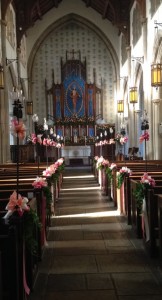 beautiful. It is also empty. I follow a voice to a tiny side chapel. A priest is reading a prayer in front of about six people. I have, of course, arrived late. My entrance is not subtle as I awkwardly make my way to a chair in the front. Apparently evening prayer is not a widely attended event, even on Easter. Towards the end of the service the priest starts reading the prayers of the people. Basically, they read aloud the names of people living and dead that you/ the church collectively, is supposed to say a prayer for. I listen for his name, though I know he passed before I was born, too long ago for it to be read. I am surprised. People with HIV/AIDS are mentioned twice, once for those living with it, once for those who have died from it. I wonder at the impact the disease had on this church’s community, its psyche. The impact it still has. This is my Uncle Christopher’s church, and though his name is not read specifically, he is one of the many who has died of AIDS. The priest pauses for a moment of silence, and I spend some time with my uncle. My version of Easter.
beautiful. It is also empty. I follow a voice to a tiny side chapel. A priest is reading a prayer in front of about six people. I have, of course, arrived late. My entrance is not subtle as I awkwardly make my way to a chair in the front. Apparently evening prayer is not a widely attended event, even on Easter. Towards the end of the service the priest starts reading the prayers of the people. Basically, they read aloud the names of people living and dead that you/ the church collectively, is supposed to say a prayer for. I listen for his name, though I know he passed before I was born, too long ago for it to be read. I am surprised. People with HIV/AIDS are mentioned twice, once for those living with it, once for those who have died from it. I wonder at the impact the disease had on this church’s community, its psyche. The impact it still has. This is my Uncle Christopher’s church, and though his name is not read specifically, he is one of the many who has died of AIDS. The priest pauses for a moment of silence, and I spend some time with my uncle. My version of Easter.

